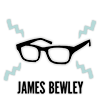Skewing the Mundane: Sketch Comedy
Sketch comics are masters of the absurd. They portray peace-loving hippies coming to blows over a J. Crew roll-neck sweater and dot-commies frantically selling the genius of a Web site called e-potato. They expose devious kids who hoodwink the Make-a-Wish Foundation and play “Dueling Banjos” on the scantily clad bottoms of corpulent Asian men. Unabashedly spreading their irreverent brand of screwball humor, sketch artists can make audiences laugh at virtually anything, from presidential assassinations to George Foreman grills. For the final part of Callboard’s Bay Area comedy series, sketch groups Killing My Lobster and 18 Mighty Mountain Warriors (with the Plethora Comedy Troupe and Kasper Hauser chiming in) stepped gamely forward to offer their wit, wisdom and ramblings.
By all accounts, sketch comedy is character-driven madness, perpetuated by a skewed view of the mundane. It thrives on the unexpected. Enter Killing My Lobster’s den and you may see a guitar played precariously on a unicycle or hear “Black Hole Sun” sung as a love duet by two aging Vegas loungers. You might even catch a Kasper Hauser invasion in the persona of Abe Lincoln’s chatty and indiscreet PR man.
“Sketch comedy is related to vaudeville and variety shows–it’s eclectic and noncommittal,” explains Killing My Lobster’s Abby Paige. She continues, “Comedy is all about creating and violating expectations. All comedy has something of the element of surprise to it; with sketch comedy the surprise is created by the variety.” At its most basic, sketch comedy depends on a few characters and an absurd yet strangely recognizable scenario. Clocking in at 5 to 10 minutes, these twisted shorts are fast-paced, clever and chucked straight at the funny bone.
Well-versed in the fine art of boiling comedy down to its essence, sketch groups find life’s peculiarities and put them forth in record time. Kasper Hauser’s James Reichmuth says, “The thing that differentiates sketch is that it tends to have short discernible comic ideas. It allows people to accept an art form that occurs in five-to-six-minute bursts.”
Persistently molding the ordinary into snippets of surreal strangeness, Killing My Lobster’s universe is one of wicked satire and un-self-conscious musical numbers. As longtime member Jon Wolanske explains, “We’re really geeky weirdos absorbed in making each other laugh.” And laugh they do–at Pygmy foreign exchange students, nuclear physics, mischievous alien crank callers–whatever tickles the Lobster fancy. Laughter is the yardstick used to gauge whether or not an idea will ever hit the stage. If the joke provokes hilarity three or four times later, they know a script will hold up under the scrutiny of an audience who expects to be amused.
By definition, the word sketch means rough and incomplete. In the case of sketch comedy, however, this could not be further from the truth. Painstaking thought (and sometimes energetic argument) goes into the conception, writing and rehearsal of sketches. Killing My Lobster’s writing process has historically been a democratic one, roping witty and creative people into an environment conducive to tossing out half-baked thoughts. Wolanske describes it as “the ability to have a germ of an idea and trust people enough to bat it around until it grows into something bigger.” Fellow Lobster James Bewley admits, “Most of my sketches are no longer than half a page.” He tops that admission by declaring, “Most ideas happen for me in the bathroom. I can’t write unless I’m improv-ing in front of the mirror. Then I try to recapture the best parts of what I toss off there.”
Paige asserts, “The importance of writing can’t be overemphasized–creating a cohesive scene where characters are established, tension is built and resolved and lots of funny things happen in between, all in three to five minutes, is a pretty specific skill.” Cutting the fat is brutally essential because of these very specific parameters. “Every word, every sentence has to serve the sketch,” says Bewley. For Killing My Lobster, idea and script development usually take about a month, culminating in a reading day to pool together all submissions. “We once had 80 scripts that we read for six hours,” Wolanske admits. “We’ll sit in a room for however long it takes.” From the collected efforts, the top 10 to 12 favorites are voted on.
Good sketch comedy utilizes all the usual suspects of narrative: beginning, end, climax, protagonist, antagonist. “Great sketch comedy takes all that and throws it out the window,” says Michael Premsrirat of the 18 Mighty Mountain Warriors. He continues, “It surprises you. Challenges you. Pisses you off.” Proud of their ability to provoke audience thought and reaction with in-your-face social and political satire, the 18 Mighty Mountain Warriors prove that–as long as people keep laughing–sketch comedy shouldn’t be afraid to poke at a sore spot or two. Though predominantly of the Asian-American persuasion, the 18 Mighty Mountain Warriors are equal opportunity humorists, merrily plunking whites, blacks and San Francisco parking law on their skewers for a light roast. Harold Byun, one of the founding members, explains that their comedic style is rooted in breaking down cultural barriers. “By putting the stereotype out on stage as a caricature, we use the context around it to undercut it. People laugh, but it’s not until a little while later that they scratch their heads and say, ‘Wow. That was messed up.'”
A skit can be nothing more than a guy walking like an idiot. But sketch comedy also attacks relevant issues. “I try to put in some kind of message under the jokes. Even if it’s not something explicit like ‘racism bad,’ at least I always try to reveal new images of what Asian-Pacific Islander Americans are and can be,” says Premsrirat. Wolanske feels, “Sketch comedy should be able to communicate a point of view in a very compelling way. Like a slap in the face. There should be a vision, something representative of a point of view that is distinct and sticks through really bizarre characters or satirical situations. Otherwise it may as well be a lecture given by a driving instructor.” Of course, chances that everyone in the group are going to agree on the message and the way it should be put forth are fairly slim. Byun says, “We have tons of arguments over material, staging and portrayal. This is good, because when stakes are higher you know you’re getting closer to something of import.” By tackling fear through comedy, the Mighty Mountain Warriors hope to raise awareness of world events and social realities. For Byun, however, “The bottom line is to make people laugh. When you can do something that is dark but still have people rolling with laughter, you know you’ve hit that magical combination.”
Message or no message, comedy is not the place for the self-conscious. Commenting on the vulnerability of being under the scrutiny of countless eyes, Paige says, “With drama, there’s a kind of safety net for the actor–it’s possible to look good while doing it. You can’t do that in comedy. You’re offering yourself up for judgment.” As anyone who’s seen (or performed in) a sketch show knows, it’s very difficult to look cool while breathlessly reciting craigslist-inspired poetry or, as Bewley can attest, prancing about the stage naked.
Reichmuth believes that great sketch comedians are character experts, adept at morphing into whatever bizarre persona is required. “It’s finding that interesting borderline character and putting him in front of people and seeing what happens,” agrees Bewley. Hopefully, what happens will be surprising. Eric Glaser of Plethora Comedy Troupe calls it “the kamikaze approach to comedy,” explaining, “A good sketch comedian is the one who is willing to take that extra risk and just go for broke.”
Inexperienced daredevils, fret not: it is possible to jump into sketch without comedic background. Byun calls his training “Pretty much zero” and his subsequent experience “learning by the trials of fire.” After sketch comedians have wet their feet in the medium, they discover the many ways in which sketch can challenge those skills. Lara Kehoe of Plethora says, “Sketch comedy is a wonderful opportunity to play a lot of different characters in a variety of situations–it stretches you as an actor. It’s ensemble work on the edge of a knife. Like improv, you have to trust your fellow players to have your back. Live comedy is dangerous because anything can happen.” Paige notes, “There’s a careful balance between cold calculation and happy accidents in sketch comedy.”
The real reward for the countless hours spent writing, rewriting, rehearsing and banging your head against the wall? Being on stage. According to Byun, “Performance is the payoff. Getting the laughs we want is the best part.” Bewley says, “It’s so much fun to be onstage with my talented cohorts that I turn sort of pink and giggly at the very thought of it.” (It should be noted that Bewley feels “being the pink and giggly one beats being the ‘smirking, goateed, nude one’ by a long shot.”)
Outlandish and experimental, sketch has been vastly influential in the world of comedy over the past few decades. Ever since Duck’s Breath Mystery Theater (generally credited with bringing sketch comedy back after its disappearance with vaudeville) made San Francisco its base in 1976, the Bay Area has been home to a great many up-and-coming sketch groups and comedians. With a two-year-old SketchFest that has been quickly gaining in popularity and acclaim (Mad TV attended this year) and Bay Area comedians who have made it big, we are living in a hot spot of fresh comedy. The 18 Mighty Mountain Warriors have toured internationally, Kasper Hauser earned raves at the Edinburgh Fringe Festival (the heart of the sketch comedy world) and Killing My Lobster‡s cerebral loopiness has made fans of both Robin Williams and Comedy Central. Wolanske says, “It’s like a dog. It has its own life. You have to feed it and watch it and sometimes get away from it. But it’s a lot of fun to play with.”

